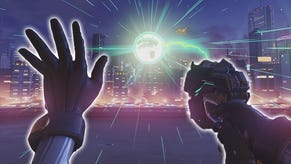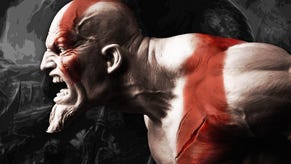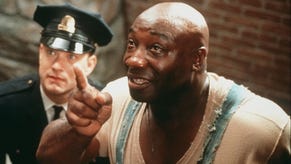God of War II
One for the unbelievers.
How do you top one of the best games ever made? Do you churn out more of the same as quickly as possible and cash in while the demand's there, or do you go through a drawn-out process of reinvention that keeps the series fresh? As a selfish, selfish sonofabitch gamer, you always want a bit of both. Always. You want a quickfire sequel to sate your appetite, but you certainly don't want the creativity to evaporate as sweatshop development cycles turn the 'brand' into a depressingly formulaic cash cow. (Hello, Tomb Raider Chronicles.)
Given that the original God of War was near-as-dammit the best-looking game ever made on the PS2, you could have forgiven Sony's uber-talented Santa Monica team for hopping straight on to the PS3 for the sequel. That is, after all, what most teams would have done (and have done) in a similar situation.
A lot of game development is one giant pissing contest, where stretching a mature platform to its technical limits sees teams racing to get an early advantage as soon as new hardware becomes available. But the God of War team had other ideas, perhaps mindful of the nightmare learning curve that comes with working with unfinished hardware and tools. Refreshingly, they've spotted yet more unfulfilled potential inside the perennially underestimated PlayStation 2 and, incredibly, bettered everything that made the 2005 original such a monumentally compelling prospect.
Tick, tick, boom
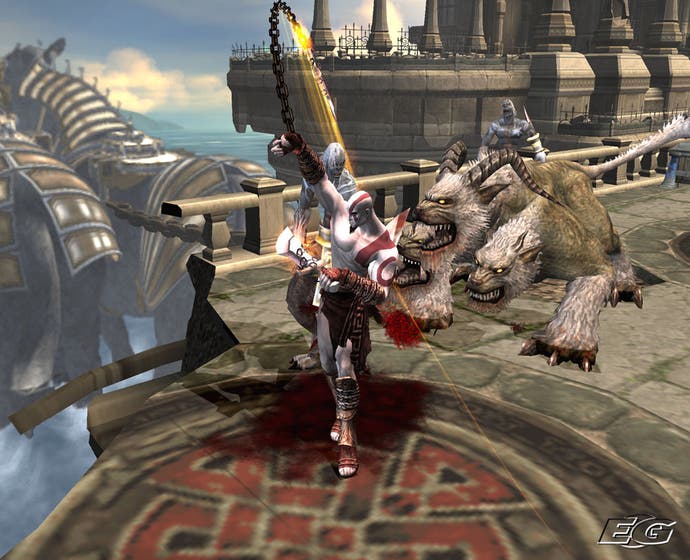
While their contemporaries are sweating Red Bull over how to make the PS3 tick ("please tick!"), this bunch have taken the smart approach: one that involves making a game for a vast installed base, and one that makes the game's visuals so routinely jaw-dropping that it makes a mockery of most of the so-called next generation title currently out there. Quite what they'll pull off when they do turn their attention to the PS3 boggles the mind.
So, to return to the original question: just how did they top God of War? On the surface at least, not a lot has changed. It's still the same Onimusha-inspired hackandslash, with shades of old-school Tomb Raider, a dash of Devil May Cry pyrotechnics and a pinch of the thoughtful Prince of Persia: Sands of Time design for good measure. It still follows the familiar formula of throwing large numbers of minions at you at regular intervals. It still gives you improbable and ever-evolving combat abilities to deal with them. And it still stitches the whole thing together with a smattering of lever-pulling, block-pushing, time-dependent puzzles for good measure. With beautifully lavish FMV and a decent storyline providing the icing on the cake, it always seems to know when to reward and when to punish. It's brutal at times, but never unfair. It's often taxing, yet always logical. This structural ebb and flow holds your attention from start to finish. Simply, God of War II sports one of the most satisfyingly honed game designs we've ever come across.
Where other combat-heavy games like Ninja Gaiden are content to play to the hardcore crowd (and more power to them), God of War II - like its predecessor - finds a comfortable middle ground for the mere mortals among us. It's a game that won't overwhelm you with finger-crippling combos, superhuman timing requirements and outrageous, unfair checkpointing. It's a game you'll actually bother to finish - simply because it never has any of those exasperating difficulty spikes. But nor is it a mindless button-masher that lacks any subtlety; sure, you'll do your fair share of wild flailing to dispatch the lesser grunts, but faced with tough adversaries and stunning bosses on an incredibly regular basis, you need to be mindful of effective counters, blocking strategies and the best use of your growing arsenal of magic attacks.
Big fun
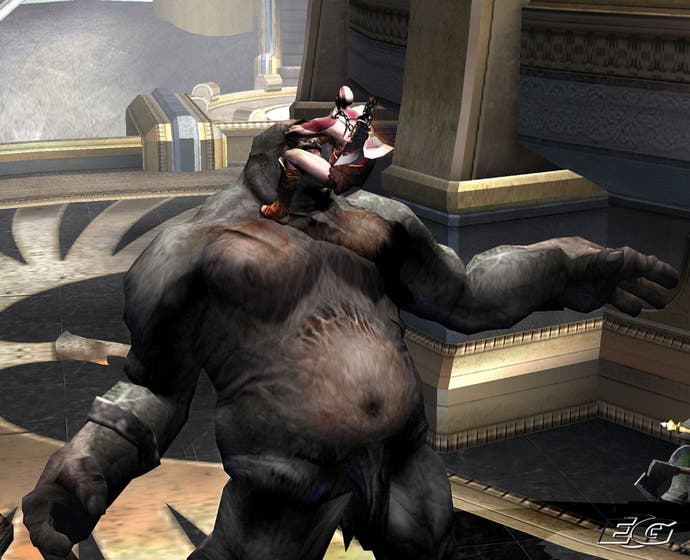
Perhaps the most charming aspect of God of War II is the way you're always motivated to keep going. This isn't a game that has you smashing your pad in hateful, spittle-flecked indignation like so many games down the years, but one that actually inspires you to get better. The balance always feels spot-on, the learning curve just right, so that you only face the really powerful enemies when you're suitably powered up and well practised at certain strategies that the game encourages you to explore (such as learning how to deflect magic attacks). Little things like sensible checkpointing in a game like this are priceless. Only the most insanely masochistic gamer enjoys traipsing through large chunks of the game that they've already proved their worth on, and God of War II almost always (except one memorably tough section near the very end) puts you right back where you copped it. You'll love them for it, too. You won't even mind the occasions when it suggests dropping down to easy mode - it seems to spur you on to not be such a chump to do so, yet at least gives you the option if you're really down on your luck and just want to see the game to its conclusion. If only more games put this kind of emphasis on making the game fun.
Such forgiving features don't exactly chip much off the gameplay length, either. Played on the default normal difficulty, you're still looking at a solid 15 hours - and probably more like 20 hours for most of us, which is exactly where a game of this type needs to be. Not too short, and not padded out unnecessarily. And even when you've run through it, there are a whole raft of enjoyable challenge-based unlockables, as well as extra difficulty settings to test the mettle of those that want a blistering challenge.
But even these gameplay fundamentals don't really answer the original question, because most of them could just as easily be applied to the first game. Perhaps it's more subtle, then. It is the puzzles? They are definitely a little more varied this time. For example, the key addition of a time-slowing element in certain areas of the game opens up plenty of fun (and rather cool) segments where you're rushing around pulling switches, grappling furiously across the level, and generally experimenting with whatever's to hand until something works. Even the bog standard block-shifting sections feel a little more satisfyingly logical, and on balance we definitely weren't as stumped this time around, which made it more fun.



